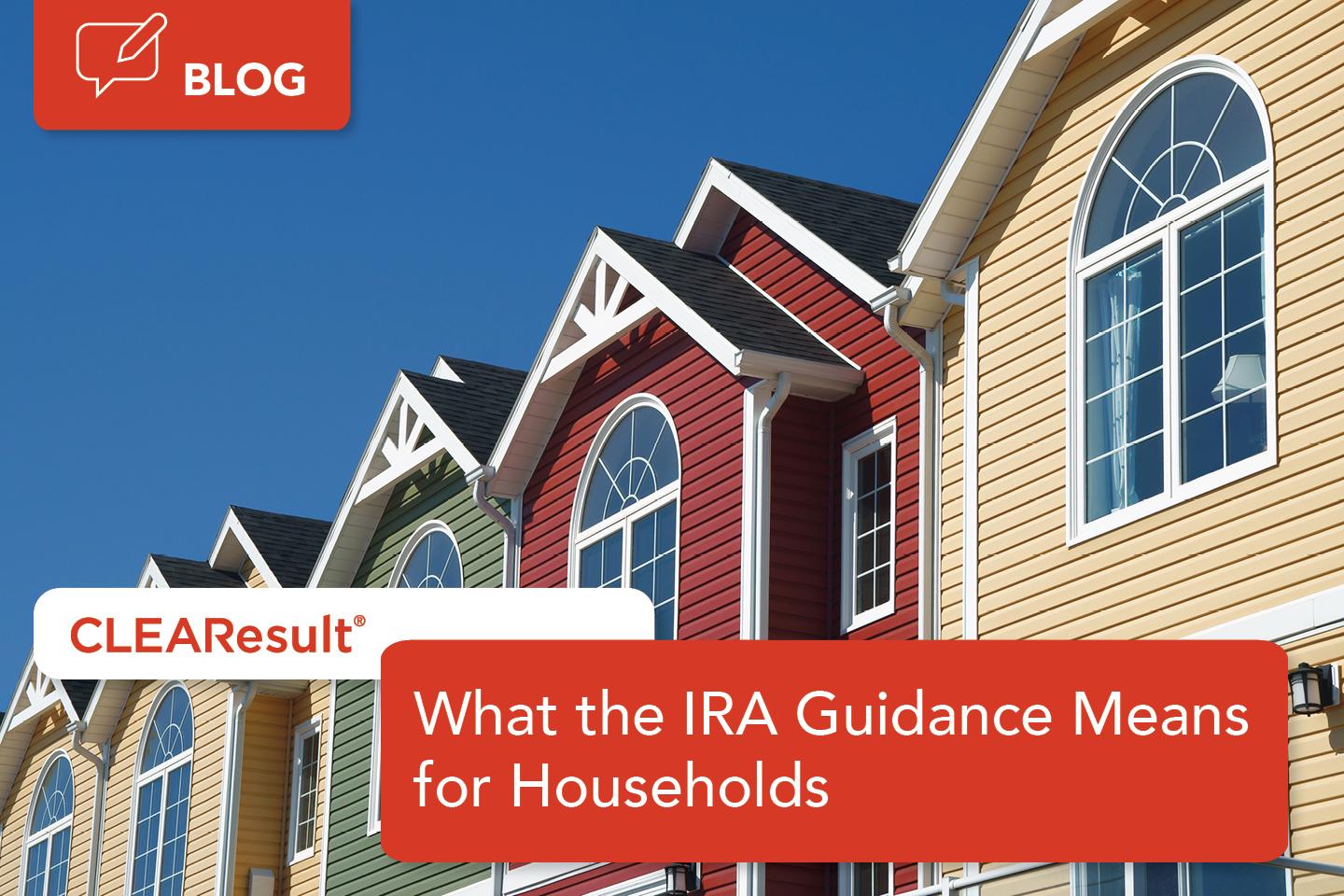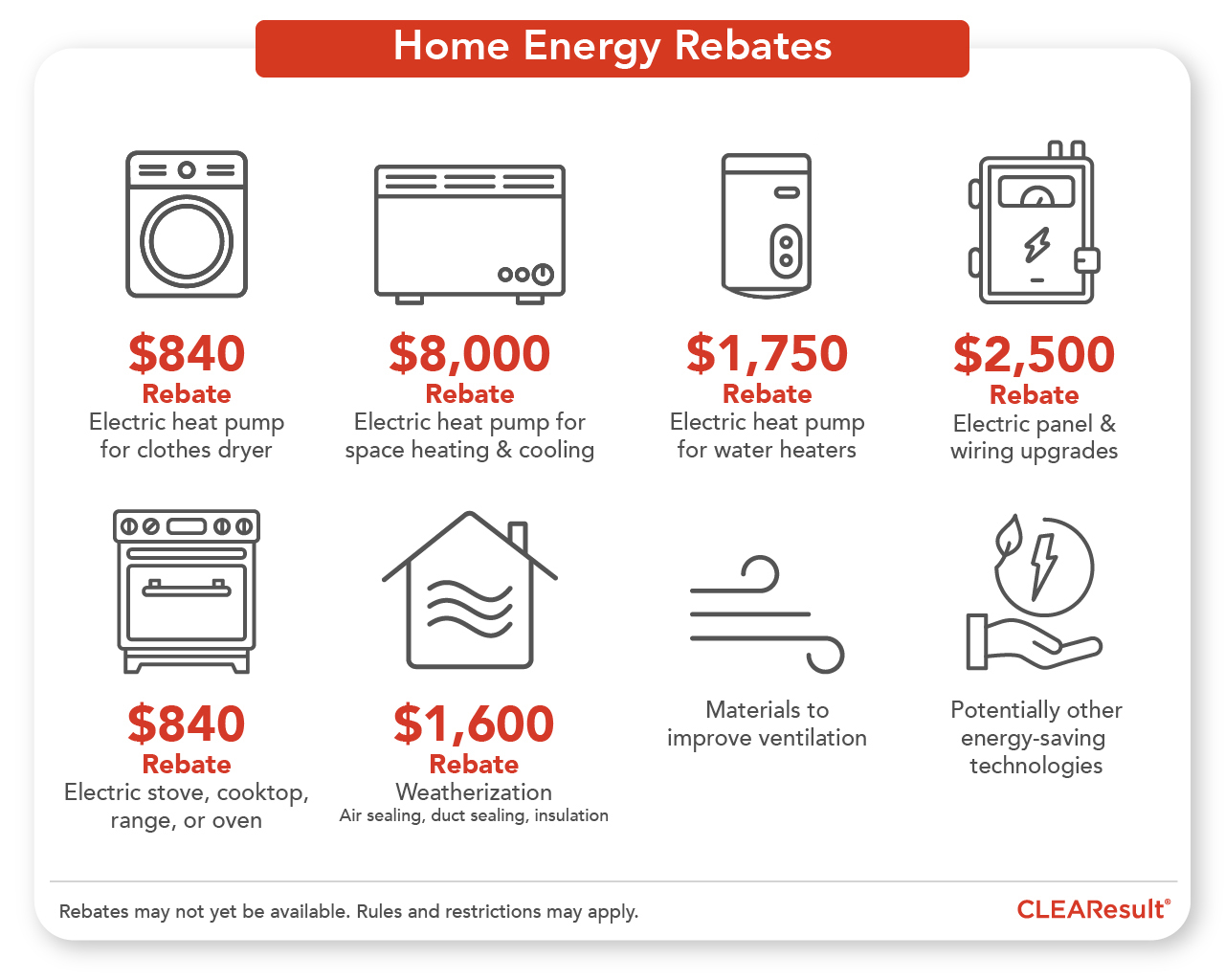More home energy rebates are on the way. Here’s what the Inflation Reduction Act guidelines mean for you.

Interested in the IRA?
Visit our Inflation Reduction Act page for more, including:
- How much different households may save with Inflation Reduction Act rebates
- An in-depth look at the HOMES Rebate Program
- Understanding the High-Efficiency Electric Home Rebate Act (HEEHRA)
- Why utility and state collaboration is key to making the Inflation Reduction Ac…
- IRA guidance for states and utilities
Money from the Inflation Reduction Act (IRA) is one step closer to reaching people in every state. On July 27, the U.S. Department of Energy (DOE) released guidance for the IRA’s two home energy rebate programs—the Home Efficiency Rebates Program (previously HOMES) and the Home Electrification and Appliance Rebates Program (previously HEEHRA)—which means states and territories can now apply for their slice of the $8.5 billion pie.
It will take states and territories some time to plan, but the new guidelines and application requirements give us a glimpse of what people can expect, and most importantly, when.
Will energy efficiency and electrification rebates from the IRA be available in 2023?
That’s the goal, however program launch dates will vary from place to place. These programs are complex, but the DOE’s guidance gives states and territories everything they need to move quickly and make participation as easy as possible. This includes a quick start program that lets states and territories who plan to launch in 2023 apply for up to 25% of their allocated funding.
Areas with existing utility or state-wide energy efficiency programs may be more likely to rapidly roll out new rebate opportunities, and the DOE noted that quick start programs would be prioritized. This process should lead to more people seeing the benefits of the IRA before the end of the year.
Will home energy rebates be taxable income?
People who save on energy efficiency or electrification upgrades with rebates from an IRA-funded program will not be required to report the value of the rebate as income. Rebates you receive through programs funded by the IRA will be treated as a reduction of the purchase price of the upgrade or cost of the project.
Are projects already underway now eligible for more savings?
No, only projects started after the state or territory receives its grant award or authorization for its IRA program launch are eligible for rebates.
Update (10/13): The DOE released new updates to the guidance that mention rebates on projects that “are initiated on or after August 16, 2022.” While we don’t have clarity yet on how states will navigate these retroactive rebates, it is potentially notable for those customers who have started or completed projects in the last year. Projects that began after January 1, 2023, may also be eligible for federal tax credit savings.
Can my household get an IRA rebate and take advantage of federal tax credits?
At the start of 2023, several home energy tax credits became available for consumers. This includes the Energy Efficiency Improvement Credit, often referred to as the 25C tax credit, that can save you 30% on qualifying upgrades. Many of these upgrades also qualify for IRA rebates, and the new guidance clears up the confusion on how they can be used together.
People who receive IRA rebates for improvements like heat pumps or insulation that are also eligible for the federal tax credit can still claim the credit after reducing the amount provided from the rebate. For example, if your household upgrades to a qualifying heat pump water heater for a total cost of $3,000 and you receive a $1500 IRA rebate for 50% of the cost, then the 30% federal tax credit is calculated on the remaining $1500, which could result in a $450 tax credit. In this example, your household could save a total of $1950 for an upgrade that will help you use less energy for years to come. For more a better look at how much your household could save, head to the DOE’s Energy Savings Hub or dive into our blog with even more examples.
Are electrification rebates only available if you’re replacing a non-electric appliance?
That is partially true, but there is nuance in the new guidance—especially for people purchasing heat pumps for the first time. To receive electrification rebates, a project must meet the definition of a Qualified Electrification Project (QEP) and follow these three requirements:
1. A QEP includes the purchase and installation of the following upgrades:
- Electric heat pump water heater
- Electric heat pump for space heating and cooling
- Electric stove, cooktop, range, or oven
- Electric heat pump clothes dryer
- Electric load service center
- Insulation
- Air sealing and materials to improve ventilation
- Electric wiring

2. The purchase must fall under one of these categories:
- As part of new construction
- To replace a non-electric appliance
- A first-time purchase of a heat pump for space conditioning that is installed as the primary heating and cooling provider for the household
The “first-time” requirement can vary depending on the type of appliance or equipment replaced. For example, a heat pump water heater upgrade that replaces an electric resistance water heater for the first time is allowed. However, you could not replace an existing air source heat pump used for heating and cooling with a new product under these guidelines.
3. The appliance must be installed in a qualifying single-family home or multifamily building
Will a home energy audit or assessment be required on all projects?
We always recommend completing a home energy assessment as the first step toward lowering your energy use, and it is required in some form to receive most, but not all, rebates funded by the IRA. If your project qualifies under the Home Efficiency Rebates Program, a home assessment is required to receive rebates. For projects that fall under the Home Electrification and Appliance Rebates Program, a limited home assessment is only required for the installation of certain upgrades, including electric heat pumps for space heating and cooling.
How will this impact my utility’s energy efficiency program?
States and territories are strongly encouraged to collaborate with utilities and coordinate with existing home energy rebate programs, however it is not required. For a closer look into what the new guidelines mean for states and utilities, check out our other blog on the topic.